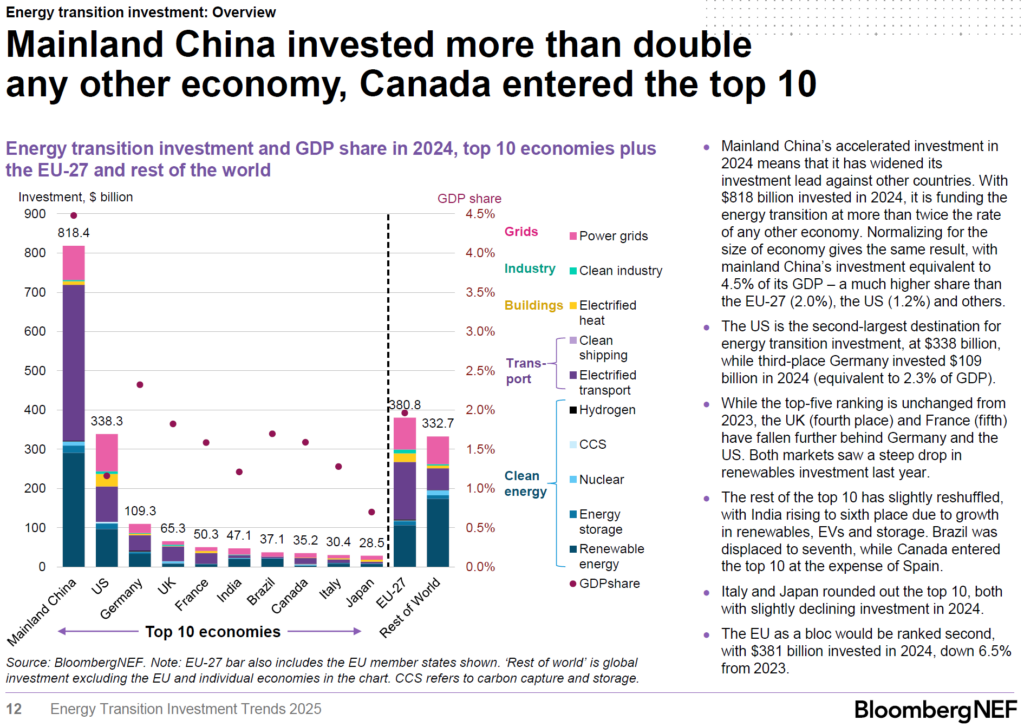In September 2024, we brought you insights from a BloombergNEF article on global clean energy investment for 2023. Today, we look at the latest data for 2024 and the trends that emerge from it. SEVA presents the key findings from the BloombergNEF: Energy Transition Investment Trends study
Global investment in energy transition reached a record $2.08 trillion($2,080,000,000,000) in 2024. This represents a further 11% increase on the previous year, which was also a record.

The largest investments were in electrified transport ($757 billion), renewable energy ($728billion) and the electricity grid ($390 billion.) Together, these three sectors account for up to 90% of total investment and all set new records in 2024. Energy storage also saw a significant increase ($54billion).), while smaller investments were made in nuclear, carbon capture and storage, hydrogen, clean shipping, electrified heating and clean industry. Investment in these sectors, which together account for 7.4% of the total, fell by 23% year-on-year in 2024.
China once again dominated globally, as its investment in energy transformation reached $818billion last year, more than double that of any other world economy. China thus accounted for two-thirds of global growth, and investment in energy transformation represents the equivalent of 4.5% of its GDP. The US remained steady at $338 billion, while investment in the EU and UK fell. Investment in clean energy supply chains (including factories for equipment manufacturing, mining and processing of battery materials) reached $140 billion in 2024.
The energy transition is moving at two speeds – while well-established and commercially proven technologies (such as renewables, energy storage and electric vehicles) are experiencing continued growth, newer technologies including hydrogen, carbon capture and industrial decarbonisation face challenges in achieving economic scalability. However, despite significant growth, current investments remain insufficient to meet the 2050 zero-emission targets – estimates suggest that annual spending would need to nearly triple. A particularly important part of this process is the electrification of transport, where it is projected that investment will need to increase up to fourfold already by 2030 in order to meet the required emissions targets.
We often hear the myth that the green transformation is only happening in Europe and will only be paid for by Europeans, while the Chinese will laugh at our naivety and emit ever more emissions. The facts show that this is not true. If we want to be competitive, we need to invest more, faster and more strategically. That is the message that must become the basis for the further development of our industry, especially the automotive sector.